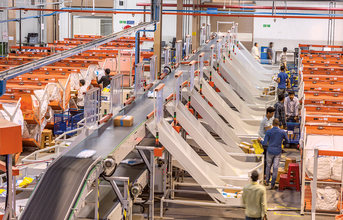
Ease of Prototyping
Prototyping is the process of developing a work-in-progress system that helps in understanding the requirements and functionality of the solution. For large and complex robotic systems, building iterative prototypes helps get a real sense of the system without actually having developed one. Therefore, there are higher chances of developing the final product that meets the requirements of the potential user. However, currently it is a very expensive and time-consuming process.
As the robotics industry grows in terms of volume, the economy of scale will play a part to bring down the cost of prototyping. Moreover, rapid advancements in 3D printing will further inspire the maker-culture. Combined with the power of augmented reality, the future 3D printers will not only be able to bring to life the sketch of a robotic system or a synthetic drug but also make it function in a virtual environment, thus cutting down the cost and time of prototyping to a great extent.
From algorithm to intelligence
Most of us were first introduced to the concept of machine learning somewhere in the early 90s when Hollywood science fiction movies depicted robots whose coding had gone awry. With intelligence and processing power exceeding human capabilities, these humanoids tried to overthrow cities. Even now, we are nowhere close to such threatening robots in real life. However, systems equipped with machine learning can capture the usage patterns of the past and optimize future performance. This helps in self-customization of the systems to get desired results. Therefore, rather than being deployed for ‘predictable', ‘routine' jobs, new age robots can take up more complex tasks.
Consider a robotic pick-and-put system in a warehouse that reads the historic data patterns to understand that the sale of certain apparel brands goes up during the Diwali festive sales. Right before the festive season, it can place the racks that store these items in front and push back the racks of slow selling items to the other end of the warehouse. This can optimize the time for pick-put, cut down the processing time for shipments, and enable e-commerce companies to handle their ‘Big Billion Sales' seamlessly.
Machines speaking to each other
Currently, IoT initiatives are mostly about connecting devices such as mobile phones, home appliances, and automobile with each other using data enabled smart sensors. Going forward, the Internet of Robotic Things (IoRT) will connect robotic devices of various configurations with each other, making them leverage each other's data seamlessly. The idea of a smartphone application that enables a doctor to control a robotic arm from miles away and perform complex heart surgery will no more be a leaf out of a Hollywood flick. As data processing becomes faster, reliable, and more affordable, connected robots will work autonomously and require human intervention only for troubleshooting.
The trends indicate that robotics is set to see major disruptions in the near future. By 2020, we may see robots taking on tasks that were never thought to have the potential to be automated. All I can say is that we are set for some exciting times.
END
The author of this article is Vikram Yadav who is the Country Manager, India at GreyOrange


























